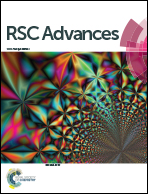Titanium oxide nanoparticle increases shallow traps to suppress space charge accumulation in polypropylene dielectrics
Abstract
Polymer nanocomposite dielectrics always attract widespread attention in electrical and electronic fields. Space charge suppression under direct current electric field is one of the key issues in developing high performance insulation materials. This paper reports a potential mechanism of space charge suppression in polypropylene/titanium oxide nanocomposites. Trap level distribution and space charge accumulation are obtained by thermally stimulated current and pulsed electro-acoustic method, respectively. The micro morphology and structure of the nanocomposites are examined by differential scanning calorimetry, X-ray diffraction and positron annihilation lifetime spectroscopy. The results indicate that doping of titanium oxide introduces numerous shallow traps and reduces the number of deep traps, which significantly suppresses space charge accumulation and increases conductive current. The results can be explained by the fact that shallow traps, resulting from the interfaces between nanoparticles and polymer matrix and the interaction between nanoparticles and the crystalline/amorphous interfaces, could increase the charge carrier mobility and reduce potential barrier for charge carrier transport. This potential mechanism is of great importance to understand the space charge suppression in polymer nanocomposites and in designing high performance nanodielectric materials.


 Please wait while we load your content...
Please wait while we load your content...